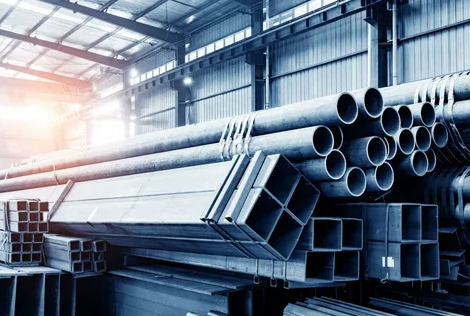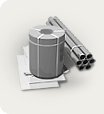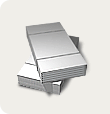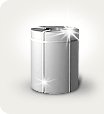Balancing supply and demand will continue to be a challenge for Europe's steel industry, despite forecasts that 2024 could mark the start of change. According to Worldsteel's latest short-term forecast report, demand will increase by 2.9% this year.
Worldsteel's forecast indicates that this will be followed by further growth of 5.3% in 2025, when EU steel consumption will rise to 148.1. m tons.
Despite current economic difficulties and increasingly negative sentiment among respondents to this month's MEPS European Steel Review, Germany is expected to remain among the world's top 10 steel consuming regions. The report forecasts that steel consumption in Germany will rise by 3.2% in 2024, to 28.9 million tons, and then rise by 10% in 2025, to 31.8 million tons.
Much of the projected consumption growth in Europe is due to the development of green infrastructure. Global demand for steel for new wind turbines is estimated to triple to around 30 million tonnes by 2030, compared with the early 2020s.
EU steelworkers demand 'level playing field'
However, at the recent Eurofer conference “The Future of EU Industry: Sustainability or Dependency,” panellists were asked whether the costs of decarbonization were partly responsible for some of the problems in the European steel industry. Eurofer vice-president Timoteo di Maulo said that as investment in reducing emissions increases, legislation will need to ensure steel companies operate on a "level playing field" with cheaper imports.
Eurofer's Di Maulo highlighted the United States' imposition of Section 232 import tariffs and the Inflation Reduction Act to support domestic industries. He also said China played a critical role in developing its economic plan and subsidized steel sector.
A new study by the OECD Steel Committee found that every US$1 million in subsidies from non-OECD countries resulted in between seven and 11 million tonnes of capacity addition.
The OECD has suggested that up to 158 million tonnes of new capacity could come online by 2026. About 60% of this capacity growth is expected to come from East Asia, the OECD said.
Attempts to balance the market
Along with the growing influence of CBAM, changes to EU import protection measures are expected this summer to reduce the volume of overseas steel imports. In April, the second quarter hot rolled coil quota for other countries was filled again in the first few days of the new trading period.
Despite the abundance of imports, many European MEPS respondents indicate that reductions in domestic capacity will benefit the market. In the short term, production cuts will ease the current downward pressure on prices in a sector suffering from weak demand.
Thyssenkrupp is already planning a longer-term solution to lower demand levels in Europe. The German steelmaker announced plans to reduce production capacity at its Duisburg plant from 11 million tons to 9-9.5 million tons. In making the decision, he cited high energy costs, which will continue to rise due to climate policy goals, as well as "unbridled growing import pressure, predominantly from Asia."
The revised level corresponds to supply volumes for each of the last three years. There is currently no data on how many jobs may be affected.
EU steel industry faces supply and demand challenges

|
|
Azovpromstal® 29 April 2024 г. 10:57 |





